Guitar Sizes: Smallest to Biggest
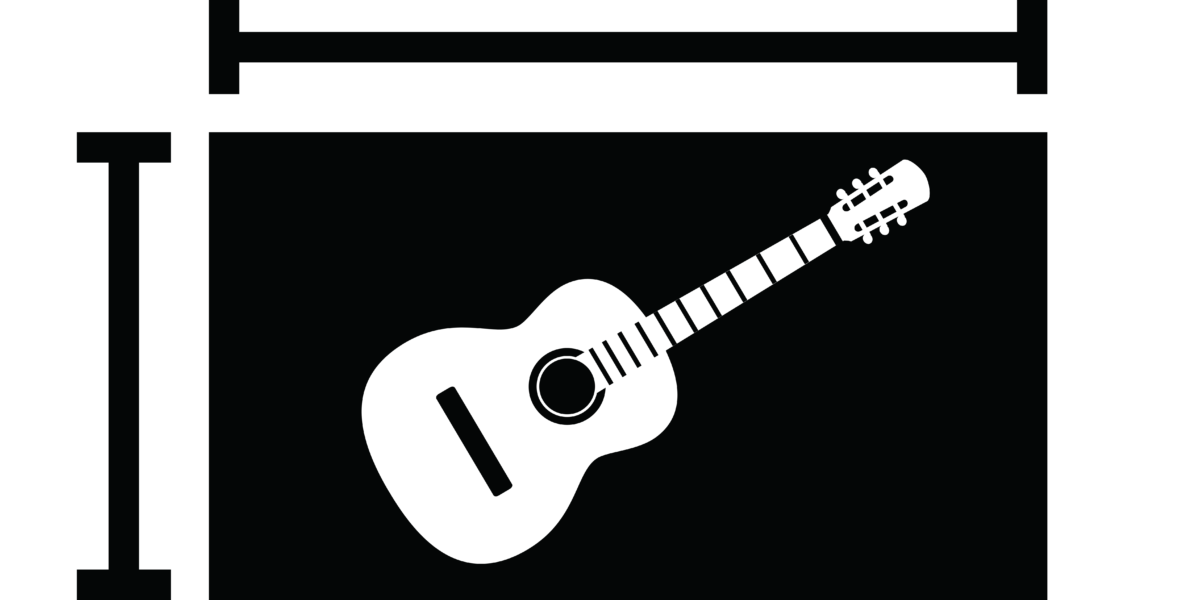
This article gives you an overview of the smallest and biggest guitar sizes.
Wondering which guitar size is right for you?
The guitar is an instrument with a rich history. Over the centuries, it has taken many forms, and as of 2022, there are over 180 acoustic and electric guitar manufacturers. The result is an explosion of guitar designs.
Whether you’re looking for a large, bassy guitar or a small, portable six-string, someone has what you’re looking for.
Let’s look at the various shapes and sizes this wonderful instrument can take.
Measuring guitar sizes.
When it comes to guitar sizes, there are a few ways to look at them.
It would help if you considered the instrument’s measurements (length and width). Many brands offer many models. Some instruments have larger bodies and longer necks.
Another way that we differentiate guitar sizes is by categorizing them. Depending on your lifestyle and the sound you create, you may prefer a travel guitar, or perhaps a Dreadnought offers that bass you desire.
The third approach you use to measure and contrast guitar sizes is by their type. Guitars have a long and elaborate genealogy. We touch on it in our blog, Who Invented the Guitar? A Brief History.
Some guitars, like the ukulele and Spanish guitar, are much smaller than the classical acoustic guitar.
Guitar size by measurement.
When it comes to a guitar’s measurements, manufacturers can alter three main parts. There’s the body, neck, and headstock. Each of the parts equates to a total length or size.
If you’re curious about the various guitar parts, check out our blog, Guitar Anatomy: What Are the Parts of a Guitar?
It covers all the bases.
What’s interesting about this is that you can play with which pieces you increase or decrease in size, affecting the instrument’s tone. For example, you can have a guitar with a smaller body and an equally long neck as a larger instrument. The variations are numerous, but you get the idea.
Generally, there are four guitar sizes:
- A quarter-size (1/4) has a length of around 31 inches.
- A half-size (2/4) is about 34 inches in length.
- A three-quarter size (3/4) is typically 36 inches in length.
- A full-size (4/4) is around 38 inches long.
Guitar size by type.
It may be an older version of the guitar or a particular design from a brand. There is a huge spectrum of guitar sizes. Each of these instruments excels in specific ways.
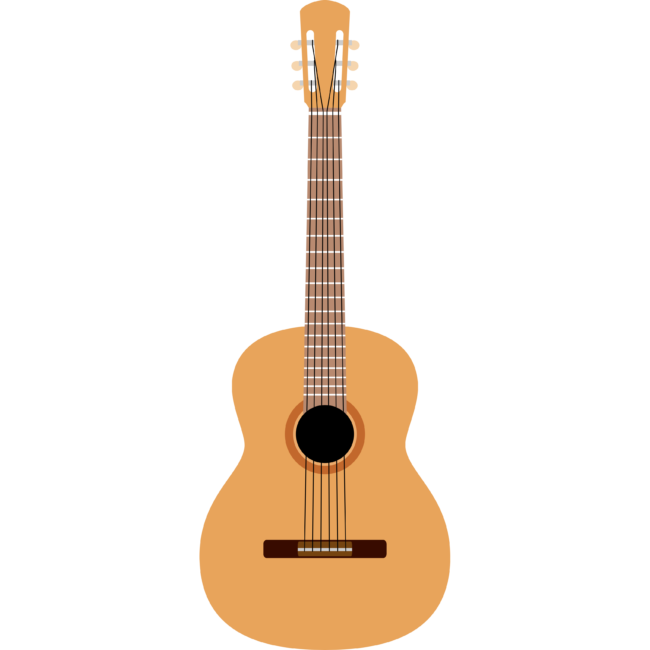
Mini guitar
The mini guitar is ideal for children.
With a shorter length and a smaller body, it’s easier to hold and play. However, many guitars which predate the modern acoustic guitar, like the renaissance guitar and ukulele, were favored by musicians who desired a lighter sound.
Mini guitars are also suitable for people looking to travel with their guitars, as they’re easier to carry around.
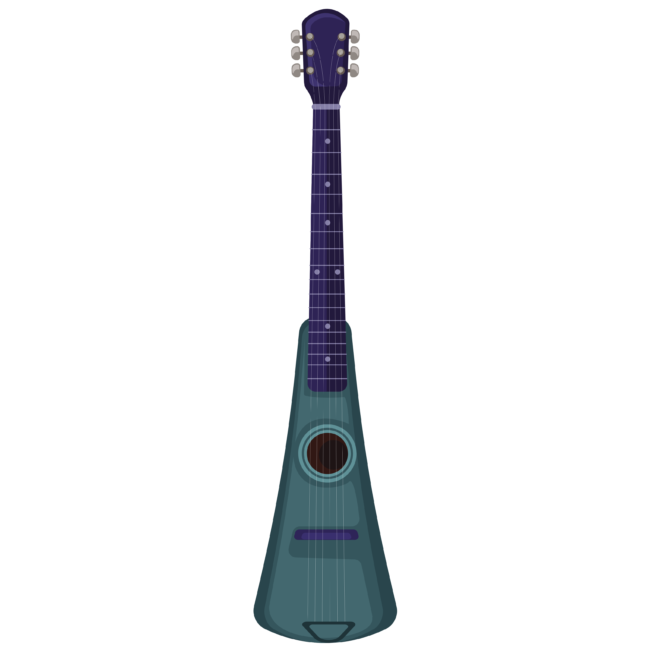
Travel guitar
Of course, not everyone who travels wants a mini guitar.
For musicians who love modern acoustic sound, the travel guitar offers some portability and thicker sounds in contrast to mini guitars. Travel acoustic guitars can weigh as little as three pounds. However, they do sound a bit thin compared to full-size guitars.
There are also travel electric guitars like the Traveler Guitar Ultra-Light Acoustic Acoustic-Electric Guitar that are specifically designed for that purpose. All you’re missing is a portable amp.
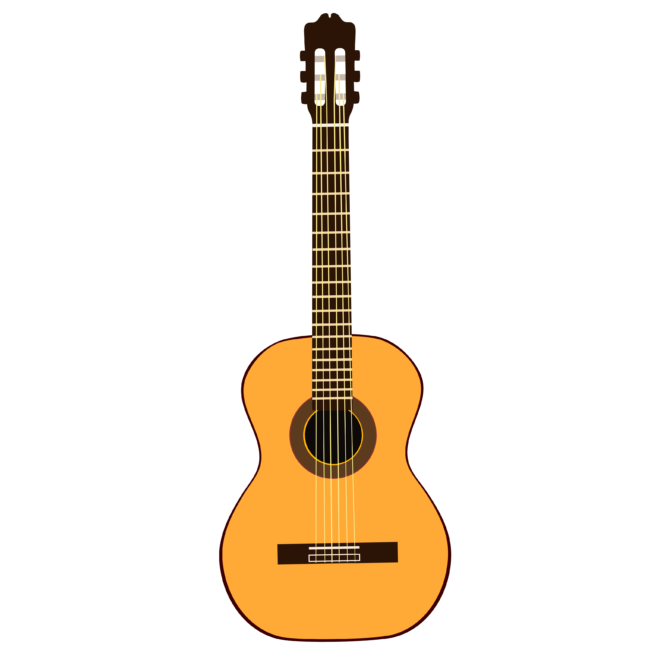
Classical guitar
As we move up the scale, we come to the Classical or Spanish guitar.
These guitars use nylon instead of steel strings, making them sound softer or warmer. They’re larger than mini and travel guitars but smaller than concert guitars.
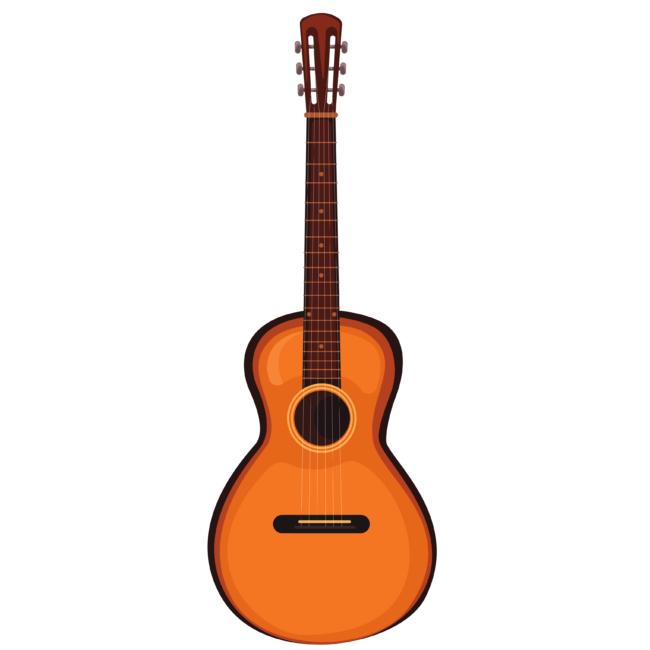
Parlor guitar
Popular in the late 1800s, the Parlor guitar is the smallest acoustic with steel strings and one of the oldest guitar models. The neck meets the body at the 12th fret and has a narrower body, giving it a boxy or twangy sound.
This instrument is a staple for finger-style guitarists, Folk, and Blues music.

Concert (0) and Grand Concert (00) guitars
With Martin’s Concert guitars, you’re looking at fully-decked-out instruments.
With a larger body and steel strings, concert and grand concert guitars offer musicians bright and loud sounds.
We use Martin nomenclature to help distinguish between the length and thickness of these instruments. The more 0s there are, the larger the instrument is.
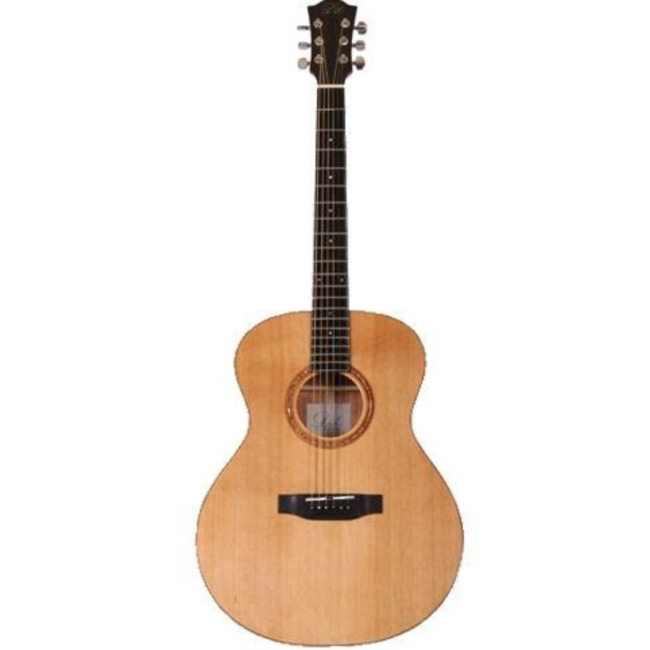
Auditorium (000) and Grand Auditorium (0000) guitars
With the auditorium guitars, we’re starting to pack some heat. These guitars look similar to concert guitars. However, they’re bigger. They have a larger body that lets you project your sound well and play soft when needed.
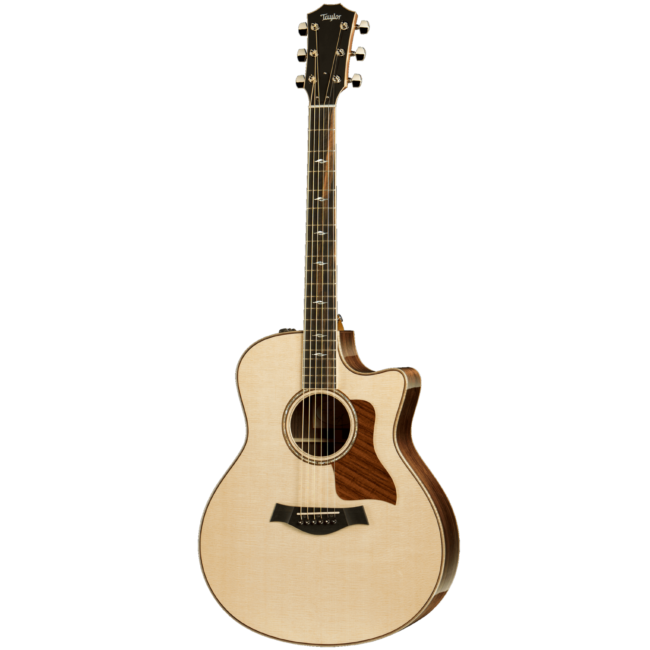
Grand Symphony guitar
Taylor’s Grand Symphony is similar to the Auditorium and Concert guitars in shape. However, it has the second largest lower bout.
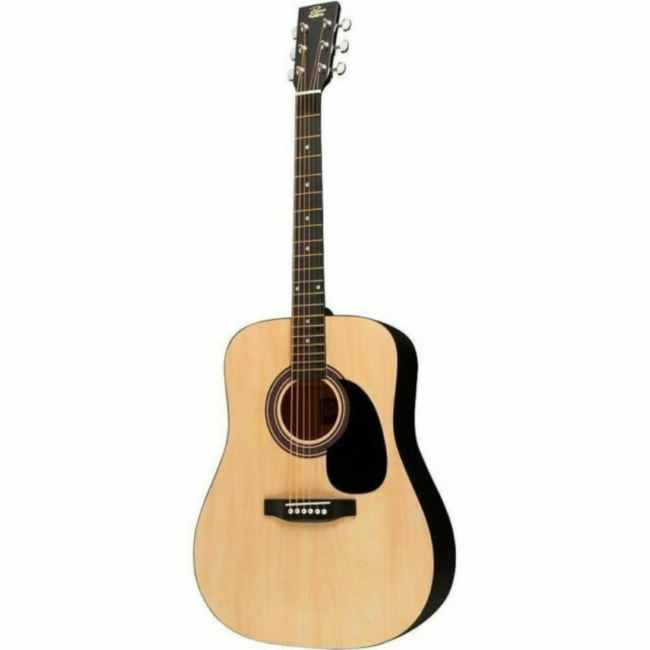
Dreadnought
Next, we have the Dreadnought.
Introduced in 1916, Martin & Co’s Dreadnought was named after the largest battleship of the time, the ‘HMS Dreadnought.’ Its larger body offers musicians a deep and bassy sound. Although it’s not ideal for smaller people—they may dread the experience.
Naturally, they’re ideal for playing loud and powerful music. However, getting quality sound with a softer touch is hard.
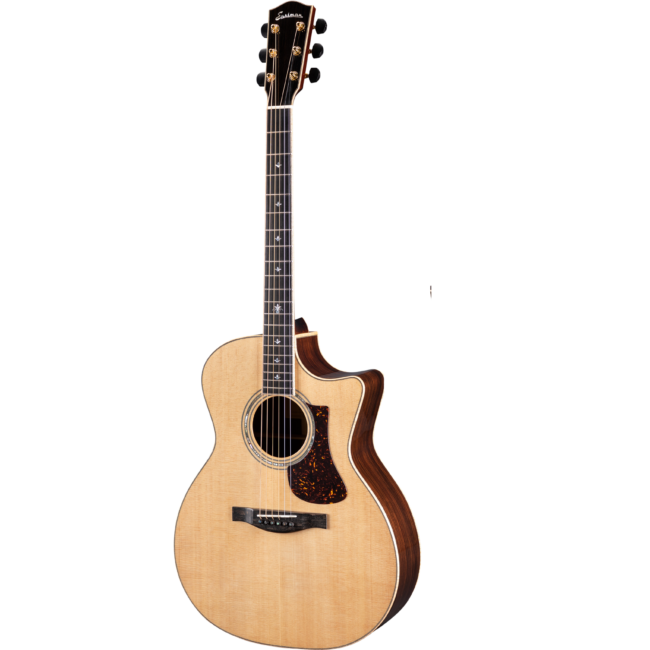
Grand Orchestra guitar
The Grand Orchestra is Taylor’s largest guitar. With a lower bout width of 16 ¾, it’s fantastic for project sound. However, unlike the Dreadnought, it plays well with a gentle touch.
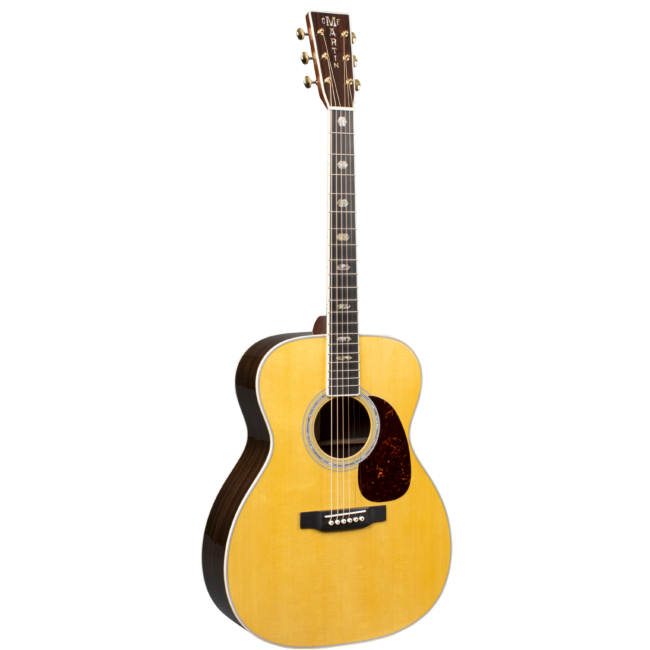
Jumbo guitar
Finally, the largest of them all is known as the jumbo guitar.
This instrument is ideal for powerful strummers. With a huge body (17-inch lower bout width) and a soundboard, it projects sound like no other. However, the larger size comes at a price—jumbo guitars tend to be more expensive and can be difficult to maneuver if you’re on the smaller side.
Sizing up your guitar.
When it comes to playing the guitar, you have many options. That’s awesome! There’s so much tonal diversity at our disposal with guitars alone. With the sheer variety before us, there’s a guitar for everyone.
Just as there are many guitar sizes, there are also many approaches you can take to learning the guitar. Some people thrive in classrooms or with teachers, while others prefer to teach themselves. Regardless of your preference, Simply Guitar is a must-have tool. With bite-sized courses, you can choose when, where, and how long your guitar lessons are.









